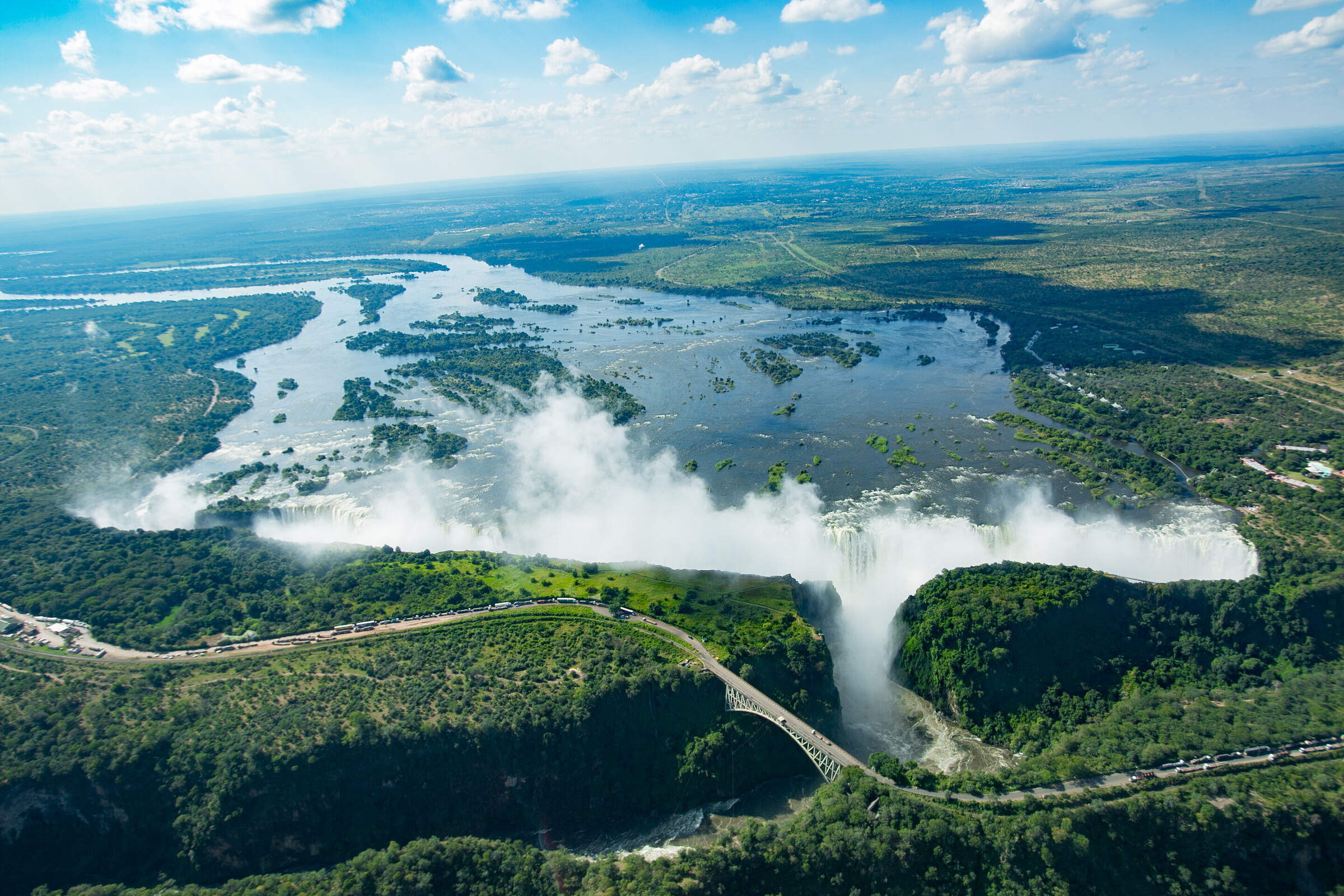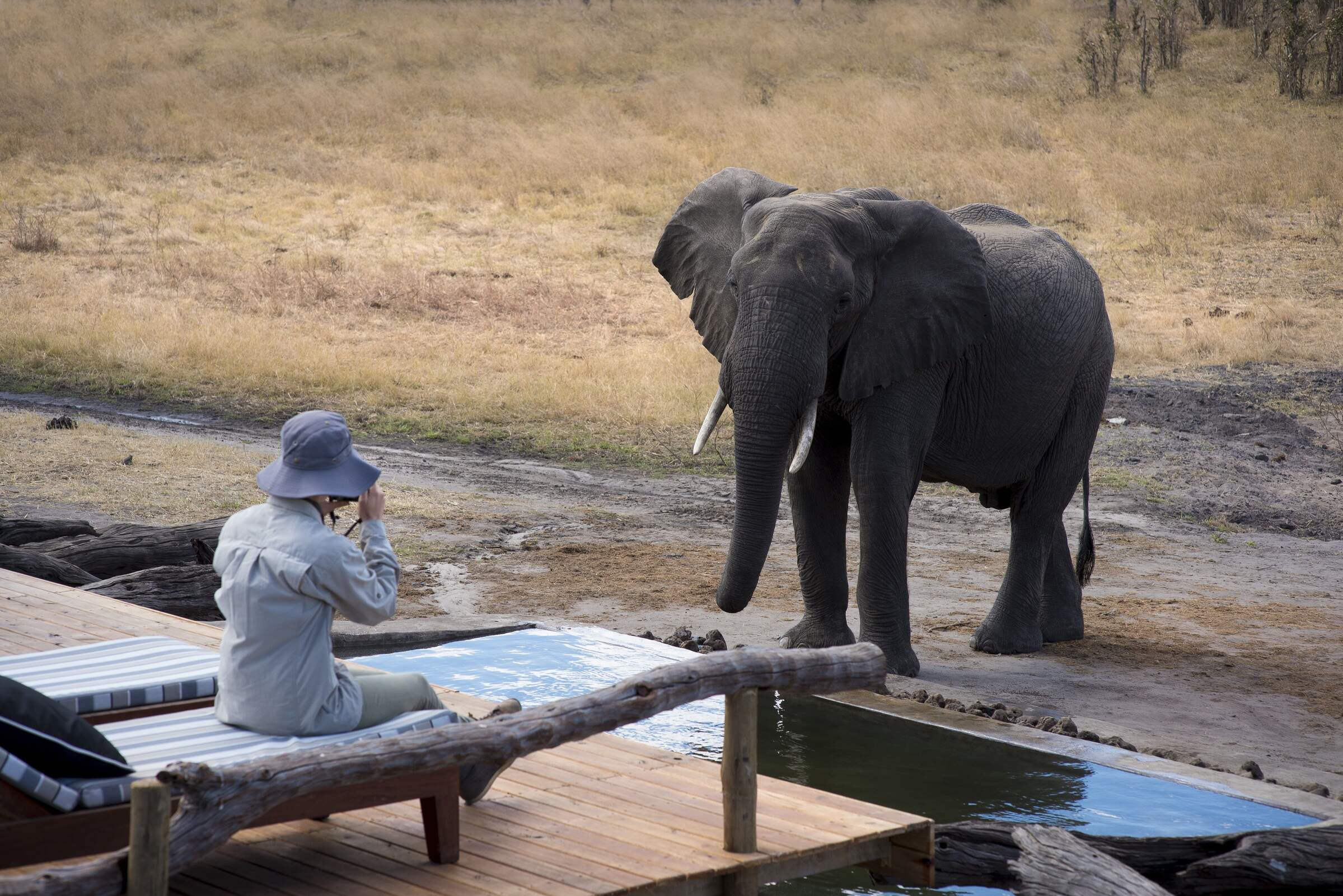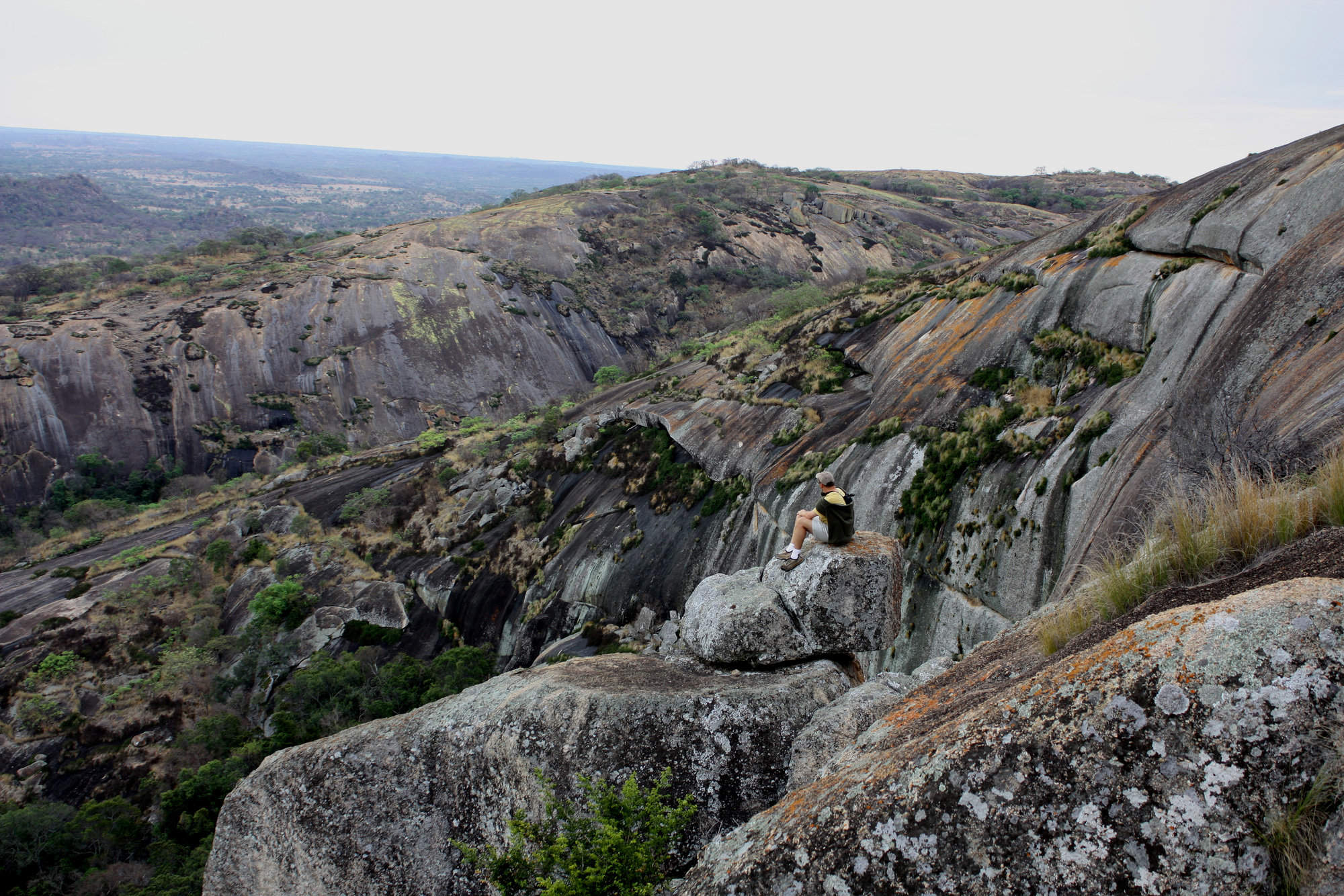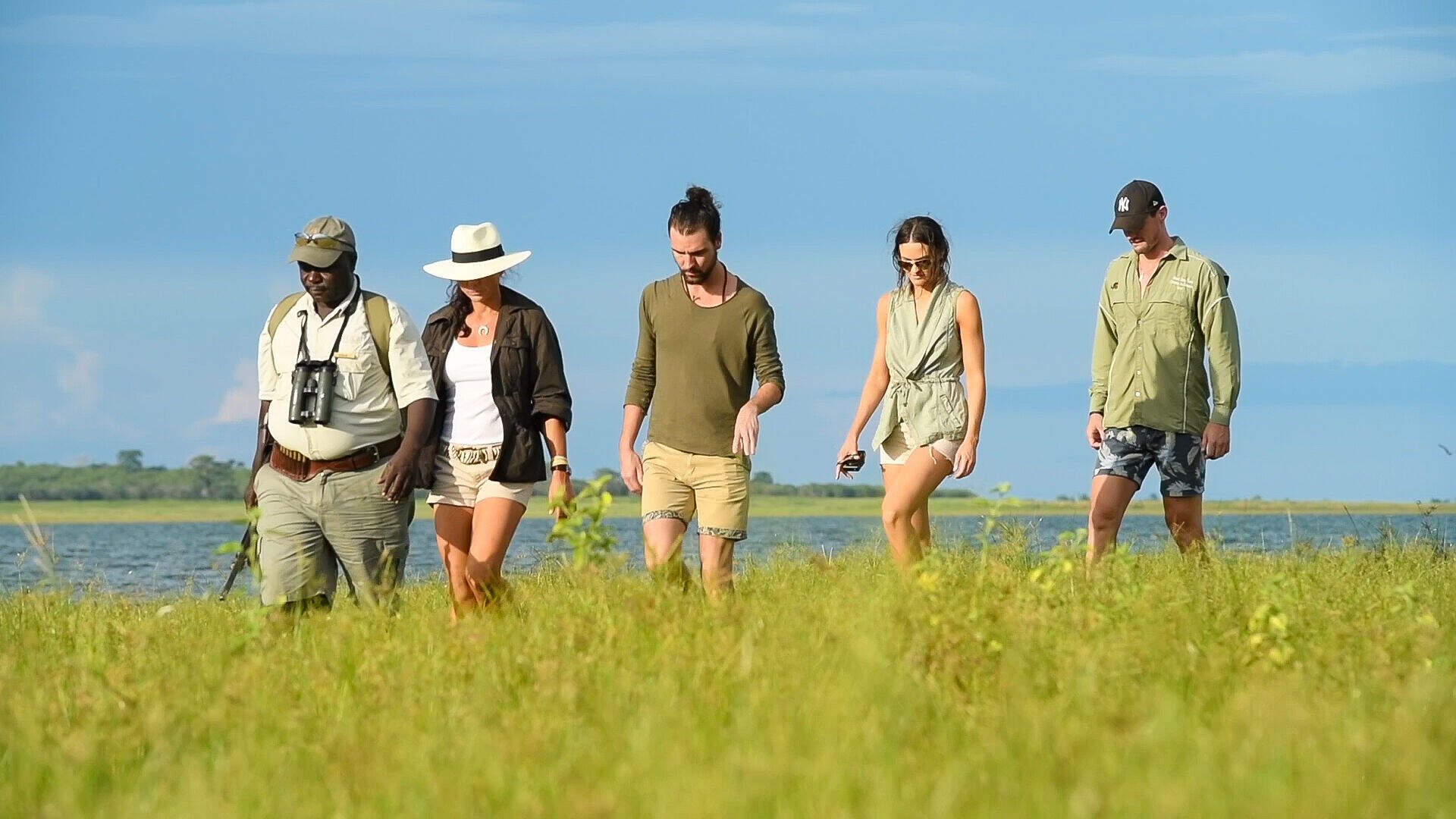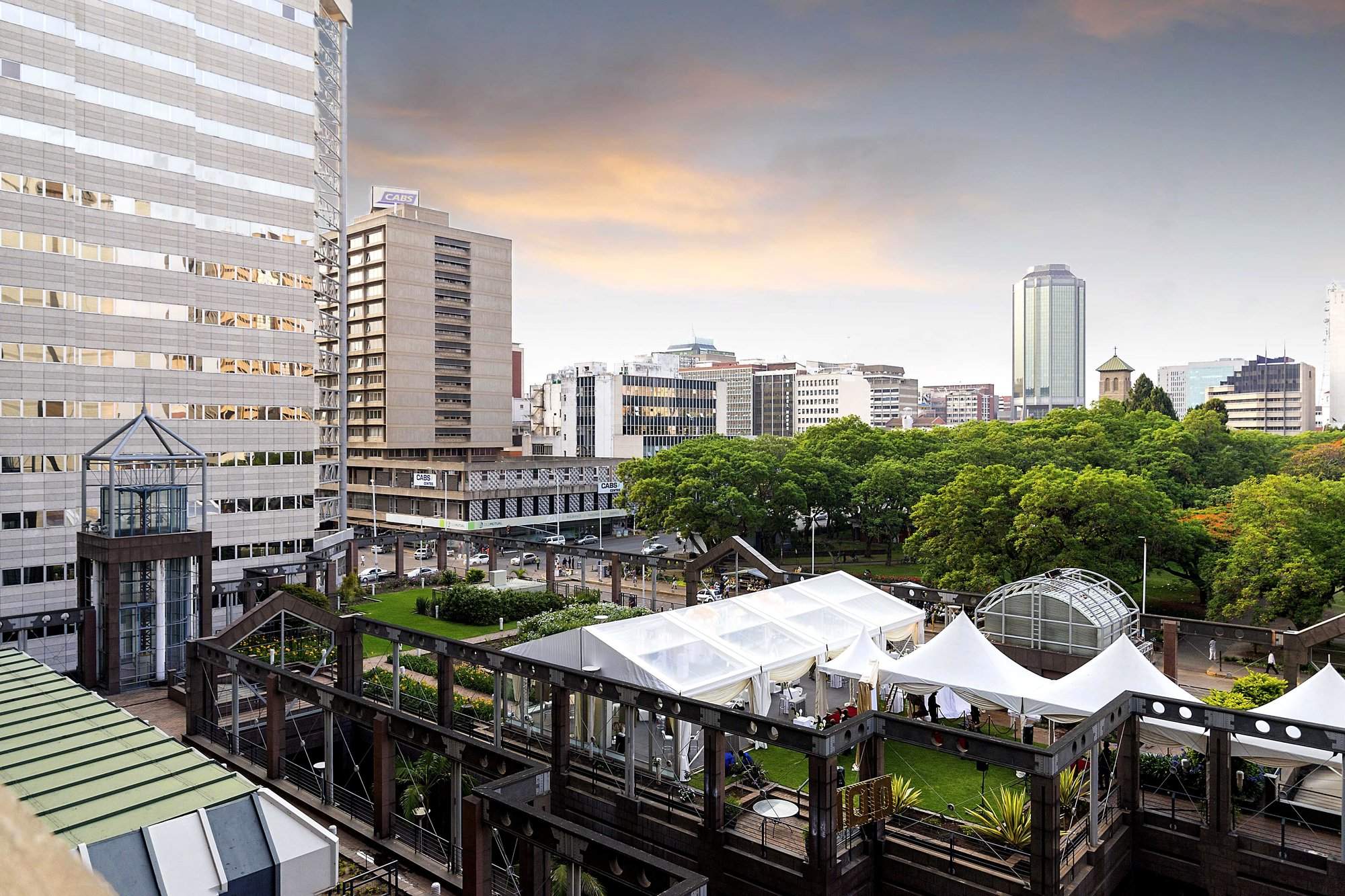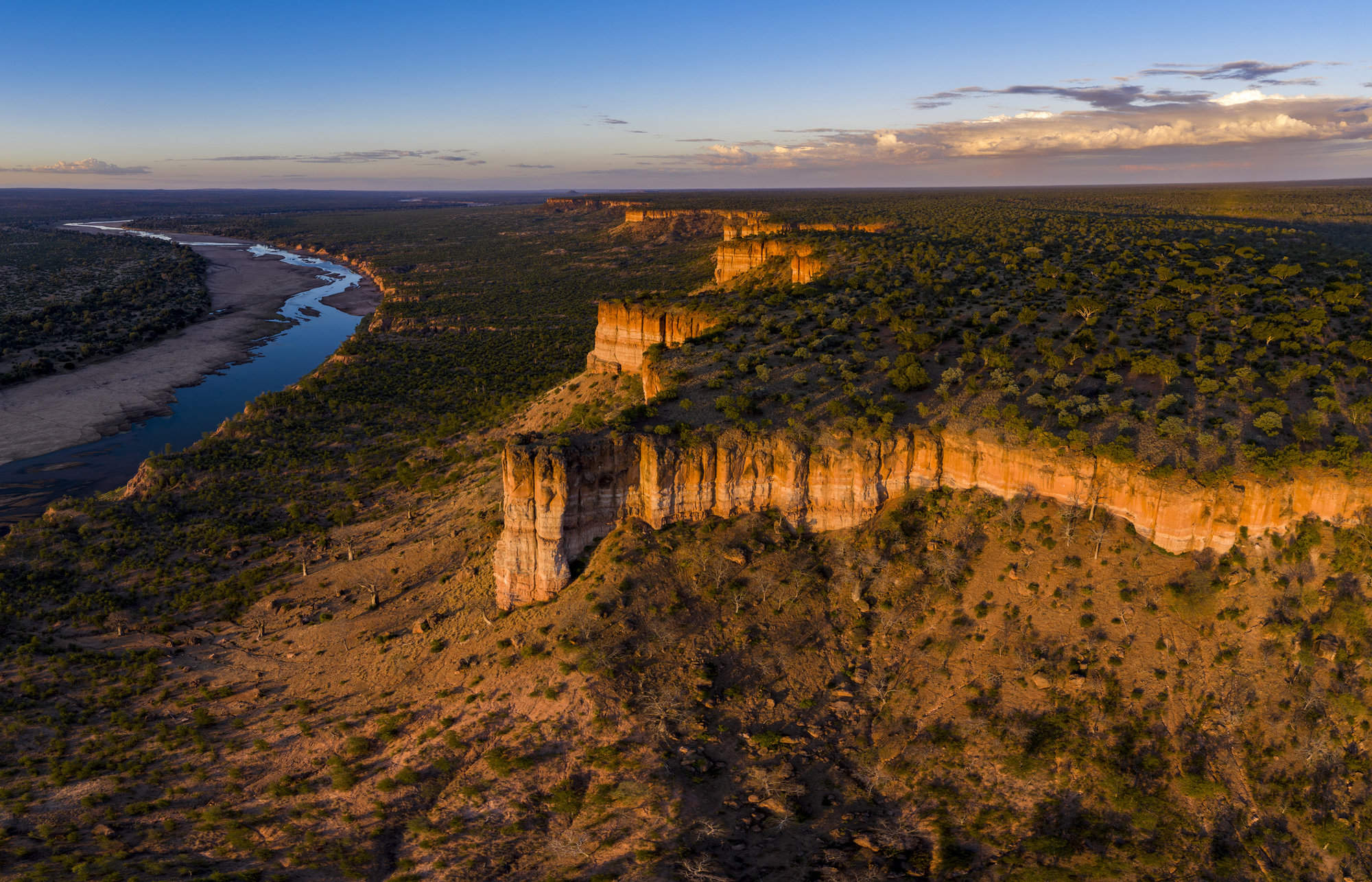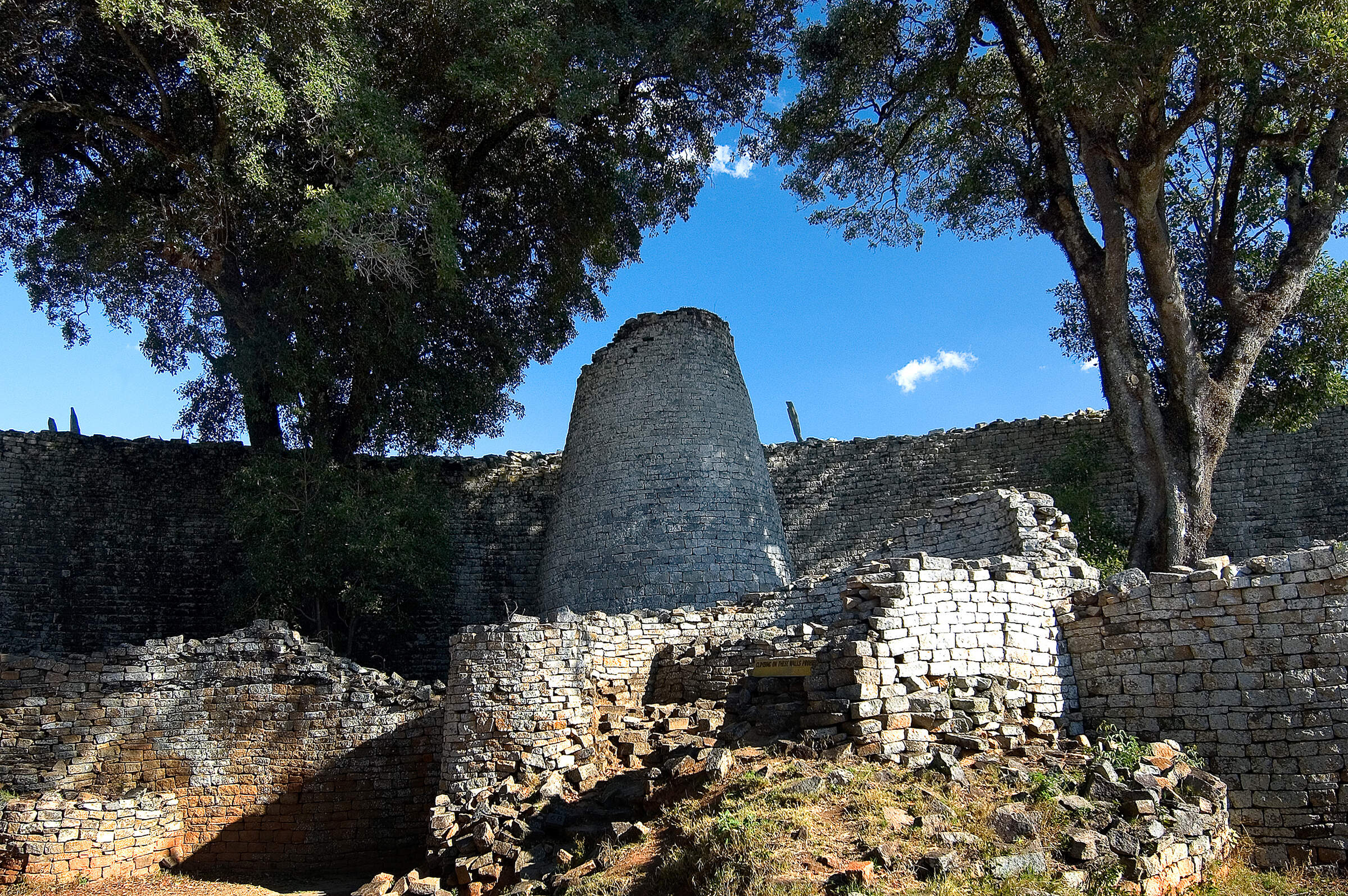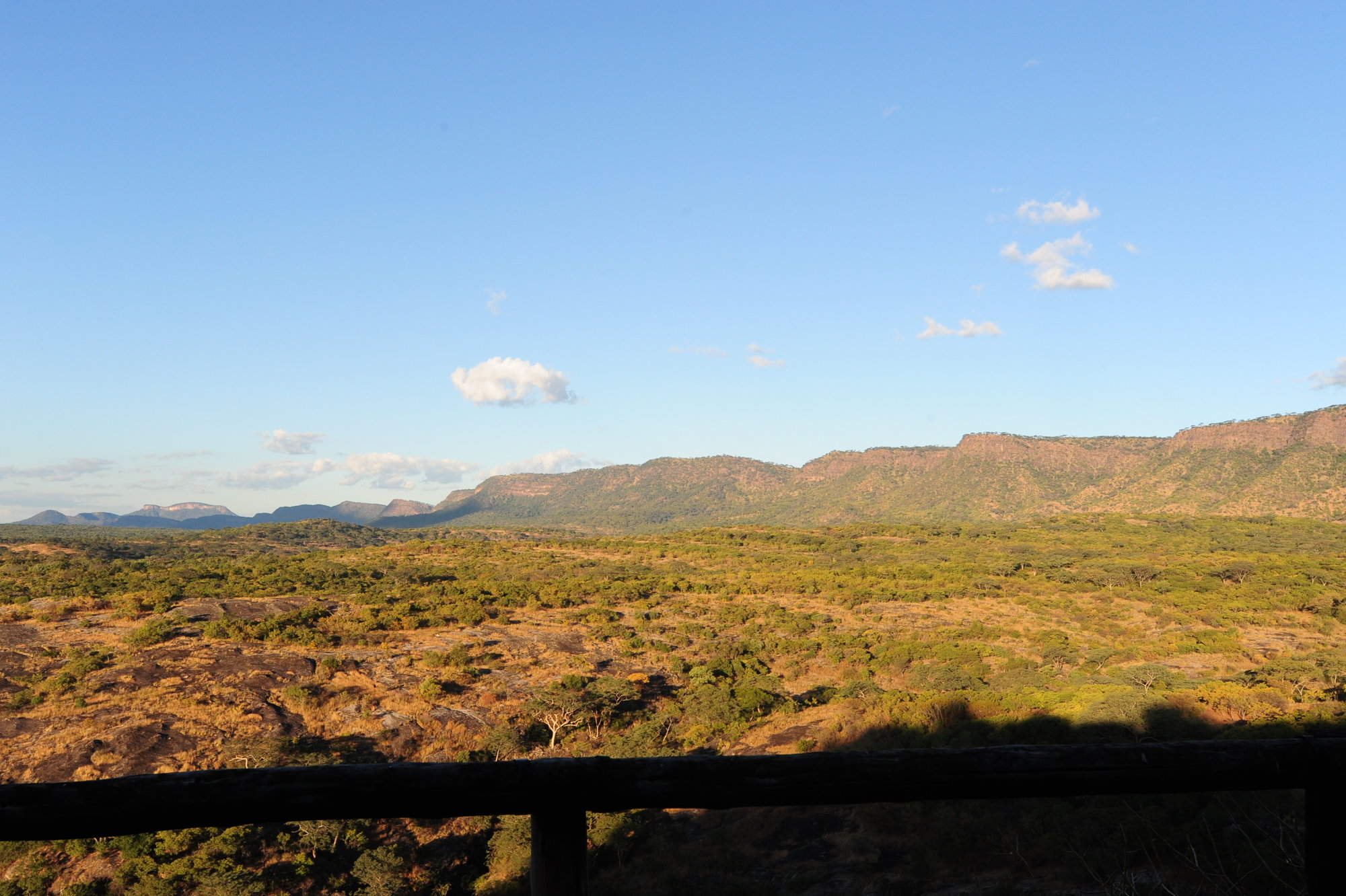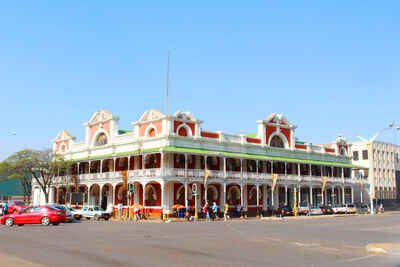
Colonial architecture with African colours
Visit the town hall, and the craft market
Streets built wide enough to turn an ox wagon
Bulawayo
Bulawayo
Once an industrial centre, it has lost some of its wealth but is still a vibrant city with an atmosphere of shabby gentility.
Home to over a million inhabitants, Bulawayo is Zimbabwe's second-largest city and the capital of Matabeleland. Come for a day or two to explore museums, lovely parks, arts and crafts shops and reserves in the immediate vicinity.
Bulawayo’s broad, tree-lined boulevards are bordered by slowly fading colonial buildings of an early Victorian architecture, their verandas alive with the hustle and bustle of urban Africa. Soak up the atmosphere whilst strolling through the streets, wander through the botanical gardens or one of the beautifully laid-out parks, and try restaurants known for excellent steaks. You can even go swimming: next to the botanic garden is Bulawayo’s outdoor swimming pool, whose brightly coloured changing cubicles have the charm of a 1920s movie.
There’s also plenty of opportunity for shopping. Just out of town along the Old Falls Road, the Mzilikazi Arts and Crafts Centre offers a range of locally crafted souvenirs such as sculptures, basketry, pottery, beadwork and woodwork. Induna Arts and Fazak Gift Centre are other curio shops worth browsing through. For relatively Western-style shopping, head for the Bulawayo Centre and Bulawayo City Hall.

Our top safaris in Zimbabwe
Here are 15 great Zimbabwe safaris to inspire you.
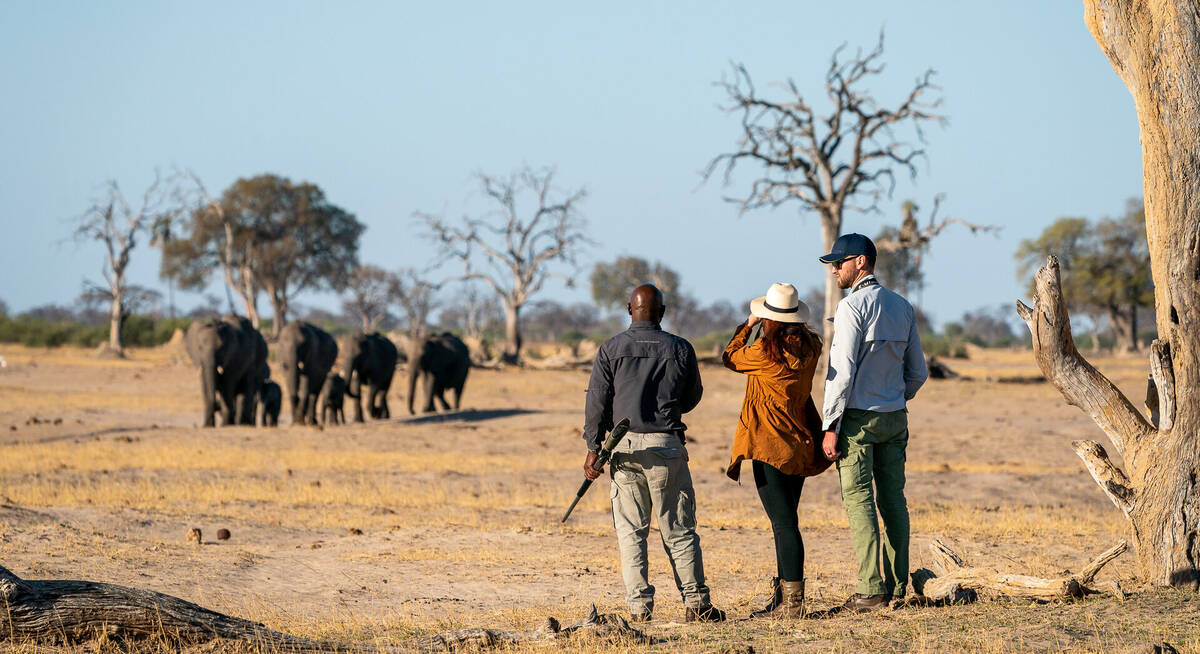
Nyala Safari
10 days • 3 locations
VICTORIA FALLS AIRPORT TO VICTORIA FALLS AIRPORT
A superb luxury safari in iconic Hwange and Mana Pools national parks, staying in a pair of the finest safari camps in Zimbabwe, with a grand finale at Victoria Falls
US$12,060 - US$16,260 per person
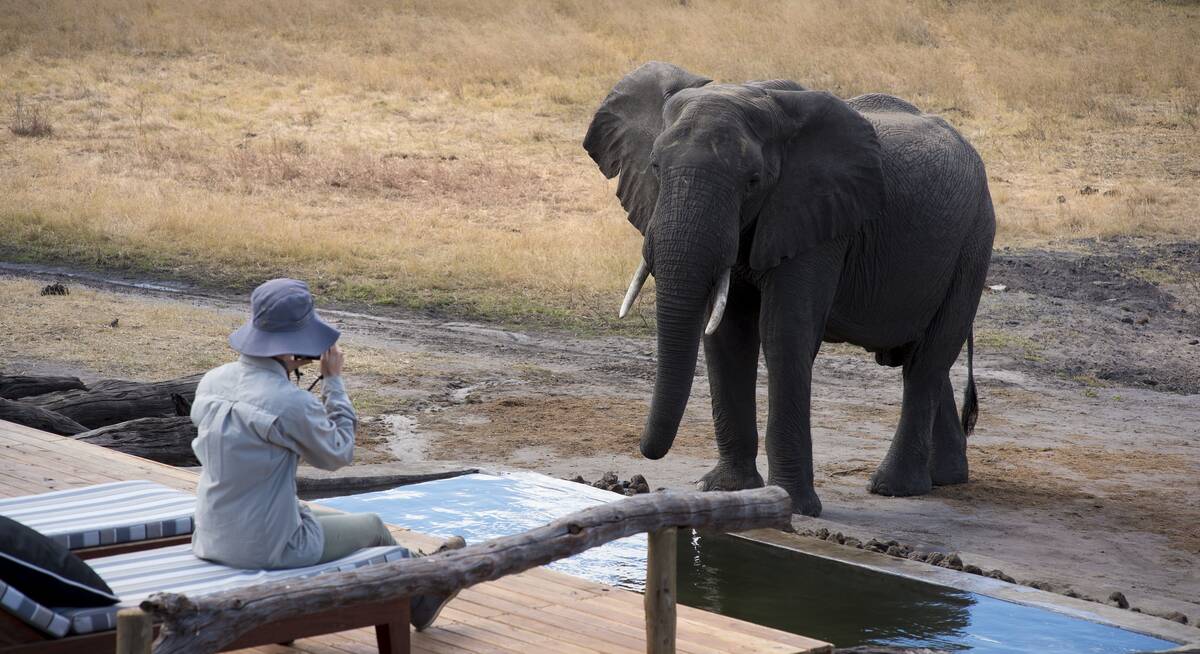
Ground Hornbill Safari
9 days • 3 locations
VICTORIA FALLS AIRPORT TO BULAWAYO AIRPORT
This Zimbabwean odyssey explores Hwange National Park from two small camps, renowned for their great guiding, before ending with insights into cultural history, a little luxury and first-class rhino tracking in the Matobo Hills.
US$5,540 - US$8,560 per person
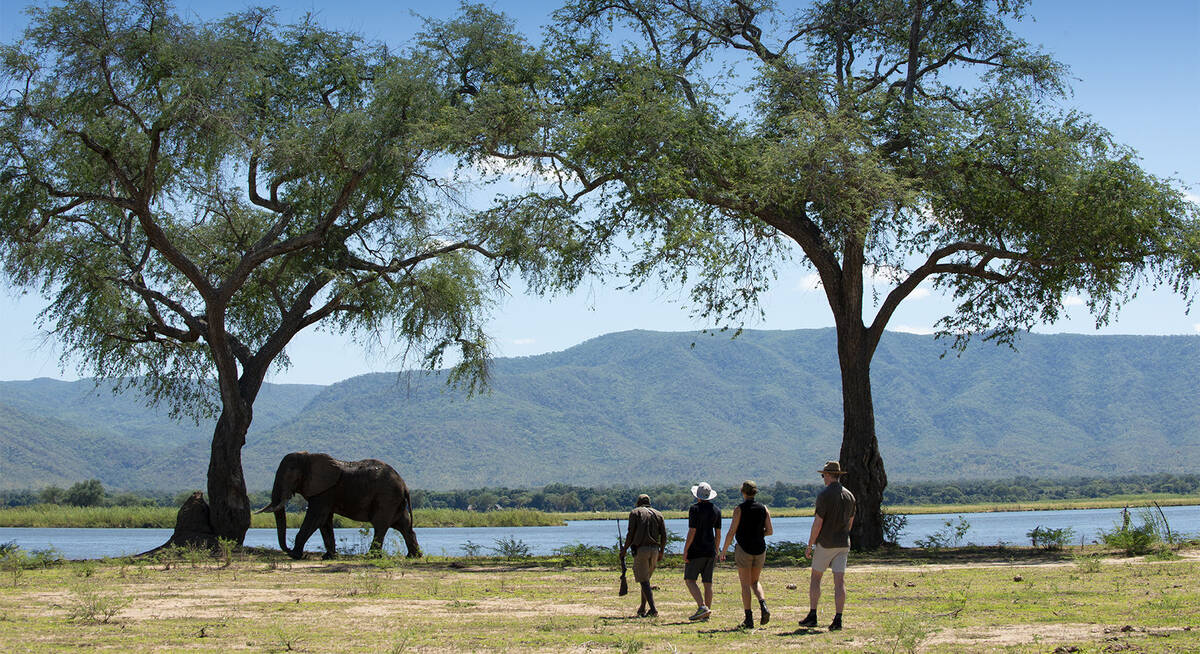
Grysbok Safari
9 days • 3 locations
VICTORIA FALLS AIRPORT TO HARARE AIRPORT
Discover three of Zimbabwe’s iconic destinations in style, flying between Hwange, Mana Pools and Lake Kariba on this varied safari adventure staying at authentic yet luxurious camps.
US$11,070 - US$16,110 per person
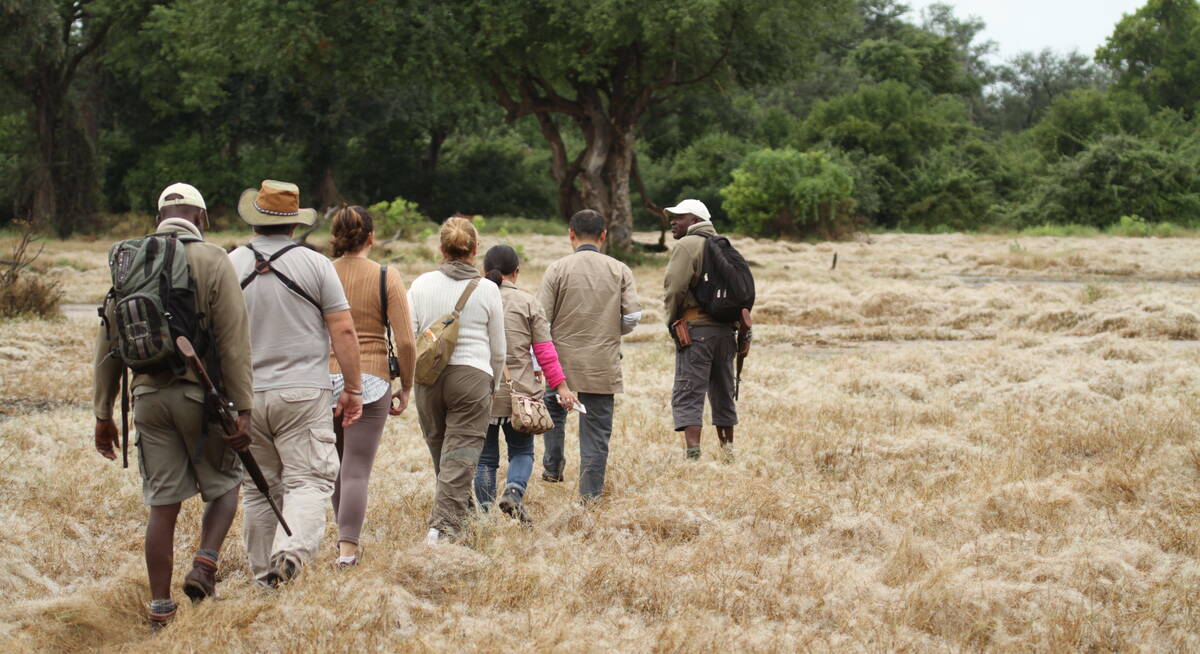
Buffalo Safari
9 days • 3 locations
HARARE AIRPORT TO VICTORIA FALLS AIRPORT
Combining Zimbabwe’s Mana Pools and Hwange national parks with stays at intimate six-tent safari camps offering excellent walking, canoeing and game drives. Superb wildlife viewing and a real wilderness-focused experience.
US$8,840 - US$11,910 per person
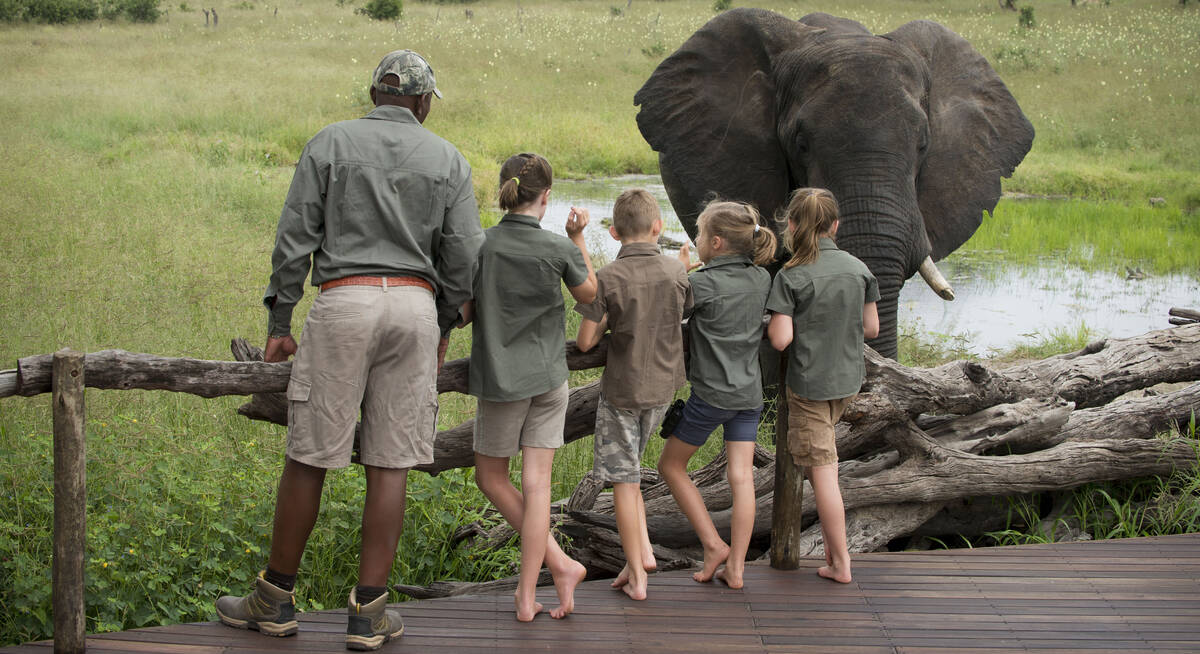
Pied Kingfisher Safari
9 days • 3 locations
VICTORIA FALLS AIRPORT TO HARARE AIRPORT
A luxury safari combining three of Zimbabwe's top highlights. The trip uses some of the finest safari camps in Zimbabwe and is perfect for a family or small group.
US$8,470 - US$11,860 per person

Klipspringer Safari
8 days • 3 locations
VICTORIA FALLS AIRPORT TO BULAWAYO AIRPORT
An outstanding-value Zimbabwe safari exploring Victoria Falls and two contrasting locations in western Zimbabwe – Hwange and the Matobo Hills – giving you a real feel for Zimbabwe, its people and wildlife.
US$3,040 - US$3,570 per person
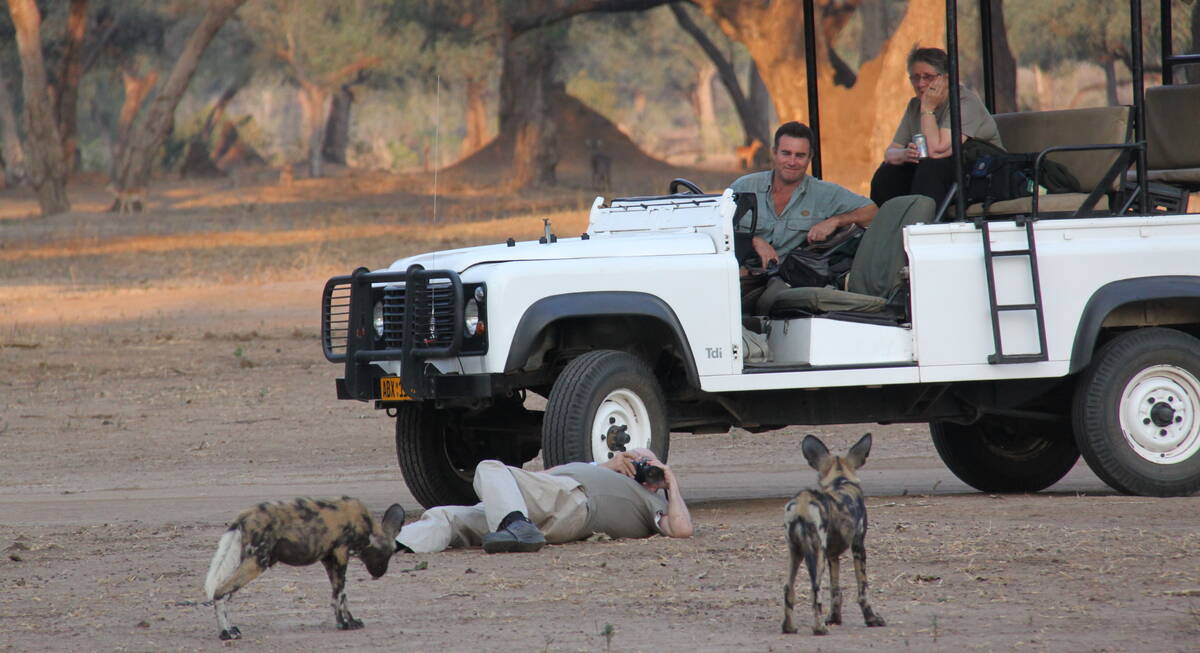
Lion Safari
7 days • 2 locations
VICTORIA FALLS AIRPORT TO VICTORIA FALLS AIRPORT
The classic Expert Africa Zimbabwe safari. Combining two of our favourite independent camps, each run by celebrated guides, exciting game drives, world-class walks and canoeing in premier wildlife watching destinations.
US$7,300 - US$10,280 per person

Bat Hawk Safari
7 days • 2 locations
HARARE AIRPORT TO JOHANNESBURG AIRPORT
Explore two areas revered by safari enthusiasts with some of Africa’s best walking and some superb guiding – even by Zimbabwe’s high standards – for a varied and wonderfully immersive wilderness experience.
US$8,670 - US$9,130 per person

Great Egret Safari
12 days • 4 locations
MAUN AIRPORT TO VICTORIA FALLS AIRPORT
This wonderfully varied adventure combines Botswana's Okavango Delta and a live-aboard houseboat safari on the Chobe River, with big game in Zimbabwe's dry Hwange National Park and the stupendous Victoria Falls.
US$10,360 - US$17,410 per person
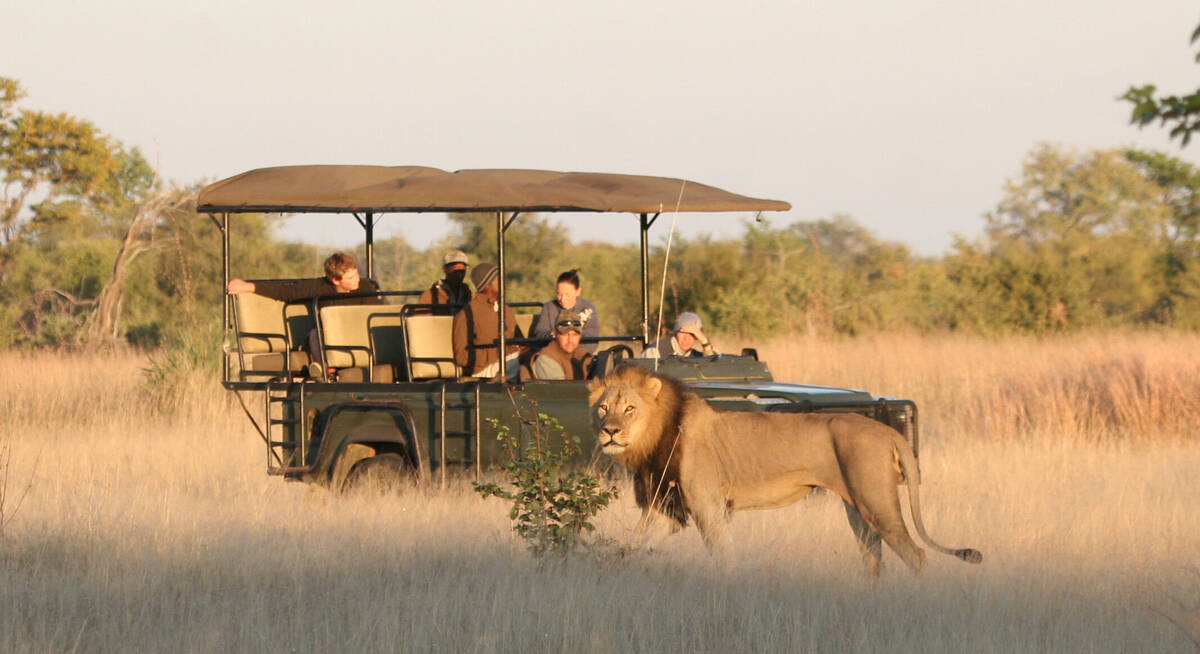
Side-striped Jackal Safari
6 days • 2 locations
VICTORIA FALLS AIRPORT TO VICTORIA FALLS AIRPORT
Get an in-depth experience of Zimbabwe’s colossal Hwange National Park, staying at two experience-focused camps with excellent guiding in contrasting areas. An adventurous safari for the real enthusiast.
US$3,930 - US$6,420 per person
Most recent reviews of our trips to Bulawayo
Click below to browse all 14 reviews from Bulawayo. All from our travellers; all are in full & unedited.
Arrived 8 Jan 2025, 10 nights
"My Jan 2025 trip"
Overall rating: Excellent
Arrived 18 Dec 2024, 32 nights
"3-generation family tour"
Overall rating: Excellent
Arrived 4 Sep 2018, 15 nights
"Absolutely memorable holiday"
Overall rating: Excellent
Arrived 25 Aug 2018, 20 nights
"Zimbabwe: still beautiful and welcoming"
Overall rating: Excellent
Arrived 3 Oct 2015, 16 nights
"My Oct 2015 trip"
Overall rating: Excellent
Arrived 27 Oct 2013, 14 nights
"My Oct 2013 trip"
Overall rating: Excellent
Arrived 23 Sep 2013, 12 nights
"My Sep 2013 trip"
Overall rating: Excellent
Arrived 3 Aug 2013, 15 nights
"Thanks EA for arranging a great trip"
Overall rating: Excellent
Arrived 1 Aug 2013, 11 nights
"My Aug 2013 trip"
Overall rating: Excellent
Where to stay in Bulawayo
Our suggestions for places to stay in Bulawayo
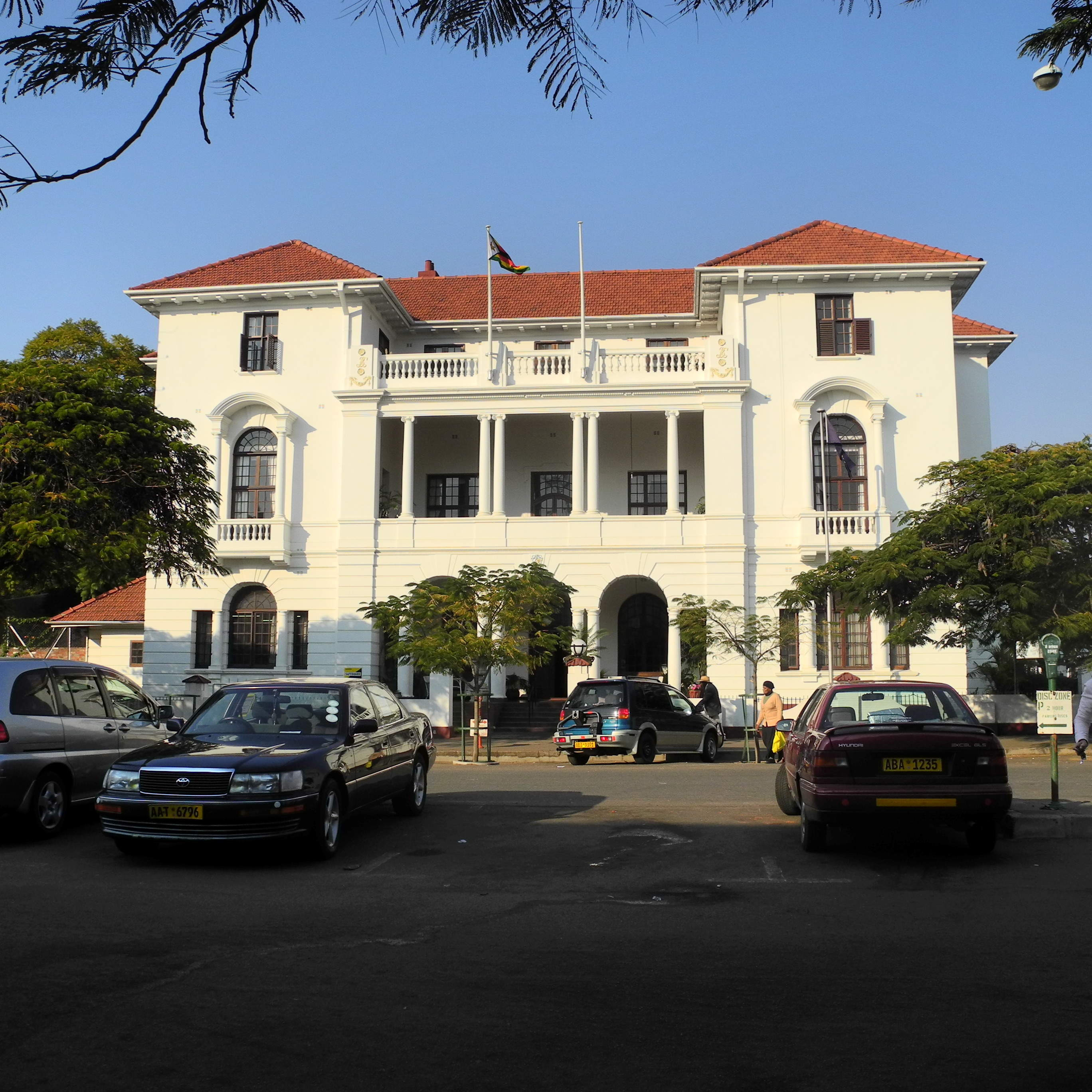
Bulawayo Club
In the centre of Bulawayo, the Bulawayo Club is a small hotel with lots of history and character, and is a good spot to start or end a trip around Zimbabwe.
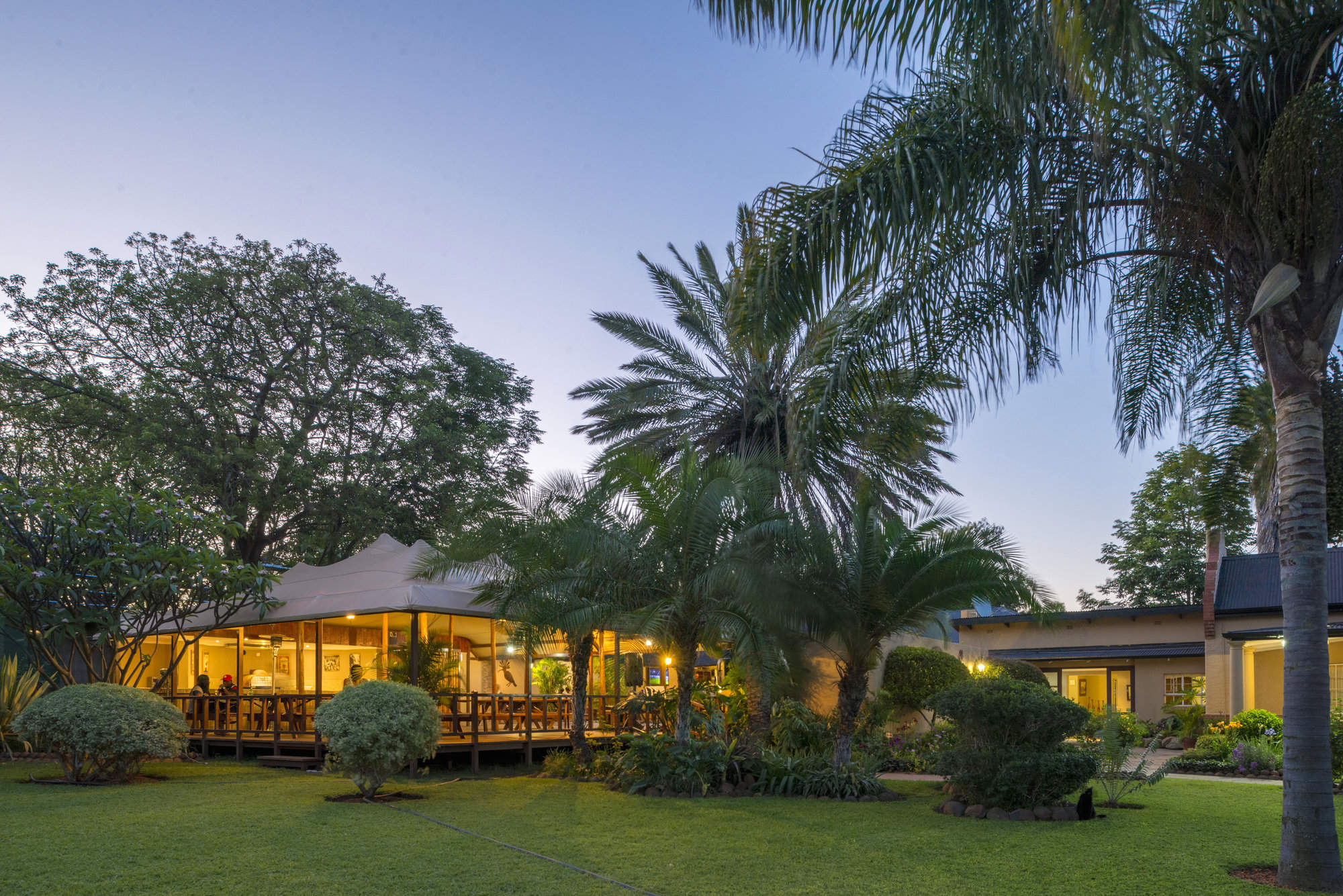
Banff Lodge
Banff Lodge offers mid-range accommodation in the suburbs of Bulawayo, expect good food, comfortable rooms and friendly staff.
When to go to Bulawayo
Our month by month guide: What it's like to visit Bulawayo in Zimbabwe
Jan
Feb
Mar
Apr
May
Jun
Jul
Aug
Sep
Oct
Nov
Dec
Zimbabwe in January
January falls in the middle of Zimbabwe’s rainy season and is the wettest month of the year. Heavy rainfall occurs most days, flooding seasonal rivers and waterholes, with the occasional sunny spell.
With the high levels of precipitation the wildlife in the national parks becomes widely dispersed, taking advantage of the abundance of food and water, and is easily hidden by the thick, green bush.
While sightings of larger animals are possible, and many species drop their young at this time, game viewing is often sparse. However, many migratory species of bird arrive in Zimbabwe making it a peak month for birding.
The rains create incredibly sticky mud in Mana Pools National Park, preventing access and causing camps to close for the season. The majority of the camps in other parks remain open, with low rates attracting a smattering of visitors.
- Peak of the rainy season: hot & humid with heavy rain most days
- Bush exceptionally thick and green, with poor game viewing
- Species such as impala drop their young
- All camps in Mana Pools closed
- Very few visitors, and low rates at open camps
Our view
A time to avoid if possible
Weather in January
Zimbabwe in February
February remains well within Zimbabwe’s rainy season. Although total rainfall drops, relatively short thunderstorms can still be expected most afternoons. On the plus side, there is a greater chance of some sunshine in-between.
Much of the country remains waterlogged, closing access to Mana Pools and severely restricting walking safaris in other parks. While game drives and canoeing remain an option, the abundance of water disperses animals, and thick grass can make it difficult to spot larger species, but birding remains excellent. Conversely, this is a great time of year to view the landscape, and is excellent for photographers. Sporadic cloud cover and clear air can make for some spectacular sunsets too, particularly over Lake Kariba and the Zambezi River where the reflections off the water add to the beauty.
- Generally wet with frequent thunderstorms & hot humid days
- Poor wildlife viewing due to dispersed animals & thick bush
- Clear air, green landscapes & exceptional sunsets
- All camps in Mana Pools closed
- Very few visitors & low rates at camps that are open
Our view
This is not a great time to visit
Weather in February
Zimbabwe in March
March is the final month of Zimbabwe’s rainy season, when the rains start to trail off and sunny days become the norm. However, some days the clouds can still build, breaking into thunderstorms in the afternoon.
Mana Pools remains closed throughout the month but the majority of camps in Hwange, Matusadona and Gonarezhou remain open. Here, the landscape is green and alive, with migrant species of birds taking advantage of the abundant insect life. Larger animals remain elusive though, and walking safaris remain restricted.
By this time of year, the rains have normally trickled down to the Zambezi River and the flow of water over the Victoria Falls starts to increase, but without kicking up too much spray to obscure the views.
- Last month of the rainy season: hot, humid days with occasional storms
- Lush vegetation means good birding, but poor game viewing
- Views of the Victoria Falls improve
- All camps in Mana Pools closed
- Open camps have few visitors & low rates
Our view
This is not a great time to visit
Weather in March
Zimbabwe in April
April marks the end of Zimbabwe’s rainy season and the end of summer. Clear skies are the norm, with just the occasional shower. Temperatures start to drop, failing to reach 30ºC most days and dropping down to around 10ºC at night.
As the rain fades the landscape starts to dry out. While the vegetation remains thick and green, the soil in Mana Pools dries enough for camps to open, and the only camps to remain closed are the most remote bushcamps in Hwange. Although viewing of larger animals remains tricky, the improved weather starts to draw back visitors, as do prices significantly below those in the peak season.
The Zambezi River and flow of water over the Victoria Falls is at its highest, although large amounts of spray diminish views of the waterfall itself.
- Transitional period, with much lower rainfall & falling temperatures
- Wildlife is still dispersed & hard to see, but sightings improving
- Views of the Victoria Falls often obscured by spray
- Camps in Mana Pools open
- Visitors start to return & camps increase their rates
Our view
A good time to visit, with pros & cons
Weather in April
Zimbabwe in May
The first month in the dry season, May is also Zimbabwe’s first month of winter. If the rains are particularly late in a given year, you may catch the odd shower, but you can expect clear and sunny days the majority of the time. While it’s warm in the daytime, temperatures drop to single digits at night, so bring a warm jumper and gloves for early morning drives.
With the rain having cleared the air, the sky is bright blue, and it’s the best time of year for photography.
Even the most remote camps in Zimbabwe are now open. With the lack of rainfall, vegetation dies back significantly, and seasonal rivers return to sand. Not only does this open up the possibility of walking safaris, but wildlife viewing becomes much more reliable.
- Start of the dry season, with milder days and cold nights
- Game viewing significantly improves as vegetation dies back
- Vegetation starts to turn from green to brown
- Best time for photography with crystal clear air
- Visitors start to return; all camps open & rates increasing
Our view
A very good time to visit
Weather in May
Zimbabwe in June
During June you can virtually be guaranteed of dry and sunny days, although temperatures continue to drop, and can get close to freezing at night in Hwange National Park. Jumpers, jackets and gloves are strongly recommended for early mornings and evenings.
The opportunities for wildlife viewing improve throughout the month as the landscape rapidly dries, and the animals start to gather on the banks of the Zambezi River and around Hwange’s waterholes.
Water levels in the Zambezi River start to drop, reducing the amount of spray kicked up at the Victoria Falls and greatly improving visibility, but still allowing a full curtain of water to cascade over the edge.
- Middle of winter, with night-time temperatures close to freezing
- Game viewing significantly improves throughout the month
- Views of the Victoria Falls are at their best
- Noticeable increase in visitor numbers
- Camps considerably more expensive
Our view
A very good time to visit
Weather in June
Zimbabwe in July
July sits in the middle of Zimbabwe’s dry season. Although it’s warm at midday, temperatures are generally cold and in Hwange it’s been known to drop below freezing at night, with the lower-altitude Mana Pools feeling a bit warmer.
With wildlife clustering around the few remaining waterholes, sparse vegetation, and some of the best views of the Victoria Falls, this is one of the most popular times to travel, with camps charging peak season rates to reflect this. That said, visitor numbers to the country in general remain low, and outside of the Victoria Falls it’s rare for any areas to feel crowded.
- Middle of the dry season with almost no chance of rain
- Clear sunny days, but very cold nights
- Wildlife viewing good; game drives and walking safaris unrestricted
- Views of the Victoria Falls at their best
- Camps charging peak season rates
Our view
A very good time to visit
Weather in July
Zimbabwe in August
While August is the end of winter and temperatures are starting to creep up, mornings and nights are still cold, and game drives in open vehicles can feel particularly chilly. Well into the dry season, the landscapes will have mostly transformed from green to brown and wildlife viewing in Zimbabwe’s national parks is approaching its best. Due to dust kicked up into the atmosphere and smoke from bush fires you may start to notice a haze on the horizon, but this doesn’t significantly impact photography.
August is one of the most expensive months, and the pleasant weather and decent game viewing attracts lots of visitors. While the national parks rarely feel crowded, Victoria Falls accommodation can sell out a year in advance.
- Warm, sunny days but cold mornings & nights; almost no chance of rain
- Wildlife viewing nearly at its best
- Landscape turns brown, & an atmospheric haze develops
- All camps charging peak season rates
Our view
Fantastic: the very best time to visit
Weather in August
Zimbabwe in September
Temperatures in September rarely drop below 15ºC, but are yet to reach the oppressive highs of summer. It will normally have been five months since the last drop of rain, so antelope and elephants cluster around whatever water remains, with predators never too far away.
The landscape is very brown, and the haze building on the horizon takes some of the colour out of the sky, so while animal subjects are plentiful, the background is not ideal for photography.
The combination of incredible wildlife viewing, hot and sunny weather, and cheaper flights outside of the school holidays make this the most popular time of year to travel, and availability at the camps can become limited up to a year in advance.
- The best month for weather, with a pleasantly warm temperature range
- One of the best months for game viewing
- Victoria Falls starting to dry but still impressive on Zimbabwean side
- All camps are charging peak season rates
- Most popular time to travel, & space can be limited
Our view
Fantastic: the very best time to visit
Weather in September
Zimbabwe in October
October is the last month of the dry season with little chance of rain but building humidity. While the higher elevation of Hwange National Park limits temperatures to the 30s Celsius, they can easily top 40ºC in Mana Pools.
With little vegetation or water, wildlife is drawn to the few remaining water sources and viewing is at its best; visitors who brave the heat can be rewarded with some exceptional sightings, although haze in the air diminishes photos. Maximum visibility and dense wildlife concentrations can also make for very rewarding walking safaris, although the heat can make them uncomfortable.
Water levels in the Zambezi at the Victoria Falls drop significantly, and large stretches of the waterfall are a dry cliff-face – although it never dries completely. Camp rates remain at their peak, but visitor numbers drop as people avoid the heat.
- Last month of the dry season; very hot with building humidity
- Wildlife viewing at its very best
- Dust & smoke in the air diminish photographic opportunities
- Victoria Falls starting to look very dry
- Camp rates remain at their peak
Our view
A very good time to visit
Weather in October
Zimbabwe in November
November is a transitionary period, with high temperatures and humidity. While they can’t be predicted with any precision, the first rains normally arrive halfway through the month, in the form of thunderstorms lasting a few hours each day.
Early November is a popular time to travel as the camps drop their rates, so if you’re lucky you can get peak-season game viewing at low-season rates. This is a gamble though as if the rains do arrive, animals are no longer limited to a few dangerous waterholes and will disperse into the bush. While all the camps in Mana Pools intend to remain open, the rains can make the airstrips unusable so you may find yourself moved to a different park, a risk that increases through the month.
- Typically the start of the rains in Zimbabwe
- Temperatures & humidity levels remain high
- Wildlife viewing rapidly diminishes as the rains arrive
- Camps remain open, but risk early closure in Mana Pools
- Much cheaper time to travel as camps drop their rates
Our view
A good time to visit, with pros & cons
Weather in November
Zimbabwe in December
By December the rainy season has begun in earnest; this is one of the wettest months in Zimbabwe, with heavy thunderstorms most afternoons and occasionally continuous rain for a couple of days. While temperatures start to cool down the high levels of humidity can make the heat feel more oppressive.
With the rains comes an explosion of green growth, and the dust and smoke are washed out of the air. The resulting scenery – with the occasional bright blue skies – can be fantastic for photographers. Thick vegetation and plentiful water makes viewing of larger animals tricky, but with migratory species arriving the birding is at its best.
All camps in Mana Pools and the remote Hwange camps close, with those remaining open charging their lowest rates.
- One of the wettest months in Zimbabwe
- High temperatures & levels of humidity
- Wildlife viewing poor, but birding good
- Lush green landscapes & clear air; great for landscape photography
- All camps in Mana Pools closed
Our view
This is not a great time to visit
Weather in December
Bulawayo: In detail
Bulawayo
Bulawayo has a key location on Zimbabwe’s road network, and with good air links to Johannesburg it’s also an efficient entry and exit point. Thus travellers usually pass though Bulawayo when travelling between Matobo Hills National Park and Victoria Falls, Harare or Hwange National Park.
Museums in Bulawayo
Below is a selection of those most popular with visitors:
- The Natural History Museum of Zimbabwe, which was opened in 1964, illustrates the country’s history, mineral wealth and wildlife. You’ll also find the world’s second-largest mounted elephant here.
- Bulawayo’s National Gallery is a branch of the National Gallery of Zimbabwe. It’s based in the attractive two-storey Douslin House on Main Street, which dates back to the turn of the century.
- Travellers interested in historical railways might like to visit the Bulawayo Railway Museum, next to the city’s railway station. Its exhibits date from 1897, and include the personal railway coach of colonial mastermind Cecil Rhodes.
Around Bulawayo: game parks and reserves
- Less than an hour's drive from Bulawayo is Matobo Hills National Park, formerly known as Rhodes Matopos National Park. As you leave the city to the south, increasingly big granite outcrops come into view, until you enter the dramatic, rugged scenery of the Matobo.
- Just 22km west of Bulawayo lie the Kame Ruins, a UNESCO World heritage site that dates from the late Iron Age. The surrounding area is protected by the Mazwi Nature Reserve, where you can go on walks and drives.
- Only a 30-minute drive from Bulawayo, Chipangali Wildlife Orphanage and Research Centre is home to orphaned and sick animals, including lion, cheetah, leopard, black rhino, several antelope species and a variety of birds.
Geography of Bulawayo
History of Bulawayo
Bulawayo’s mineral resources meant that the Ndebele weren’t the only people interested in the land. Conflicting interest came from the armed forces of the British South Africa Company (BSAC), led by Cecil John Rhodes, and the resulting Anglo-Ndebele wars eventually forced Lobengula to flee Bulawayo in 1893.
Under the rule of the BSAC, Bulawayo became a flourishing town of traders, prospectors and European settlers, whereas the Ndebele were increasingly exploited and discriminated against. This, along with a long drought and a plague of cattle disease, led in 1896 to a brief, bloody uprising known as the second Matawelele War.
Although the Ndebele were outnumbered by Rhodes’ forces, and had to retreat into the Matobo Hills, their guerrilla resistance forced Rhodes to make concessions when he eventually negotiated peace. Yet only a year later the nation was officially named ‘Rhodesia’ after its colonial ruler, and the white-minority government that was installed attracted more and more European settlers.
Over the next century, Bulawayo’s part in the country’s development declined. In the 1970s, during the war of liberation, the city was closely associated with the ZAPU forces, led by Joshua Nkomo. However, after Zimbabwe’s independence in 1980, ZAPU, Joshua Nkomo and indeed Bulawayo were all effectively sidelined by Robert Mugabe and his more powerful ZANU PF – who consider Harare to be their home city. Thus Bulawayo remains very much less important in the government’s eyes than the capital, Harare
Economic development of Bulawayo
Today, fuelled by the economic crisis that beset Zimbabwe in the early part of the 21st century, unemployment rates are high, and many people have returned to farming and mining. Other, longer-existing factors such as the lack of a reliable water source in the area and the discrimination against the Ndebele people have added to these problems.
That said, Bulawayo still retains most of Zimbabwe's remaining heavy industry and capacity for food processing. In addition, the employment statistics do not include those working in the bustling, informal sector. As you walk through the streets of Bulawayo, it certainly feels like a busy city with plenty of people going about their business.
Map of Bulawayo
Choices for where to stay in Bulawayo
Our 2 best hotels and places to stay in Bulawayo
There is a wealth of good places to stay around Bulawayo; as you drive around the residential areas it seems there is a lodge sign on almost every corner. Ask us for more details of what's where, and what's likely to suit you best!

Bulawayo Club
In the centre of Bulawayo, the Bulawayo Club is a small hotel with lots of history and character, and is a good spot to start or end a trip around Zimbabwe.

Banff Lodge
Banff Lodge offers mid-range accommodation in the suburbs of Bulawayo, expect good food, comfortable rooms and friendly staff.

Looking for inspiration on where to travel next?
Visit our trip chooser to explore your options and find inspiration for your perfect African adventure
Inspire me